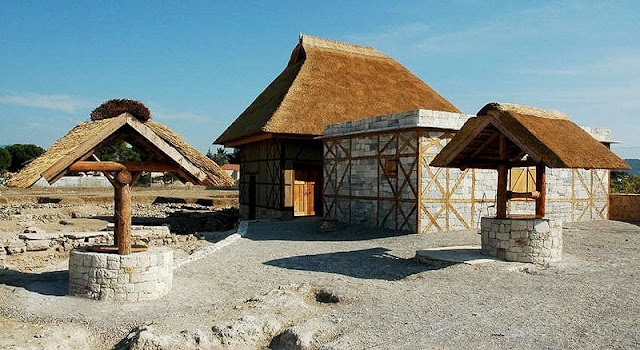
The Roman family in the ancient city of Smyrna was revealed his multi-room and bath house
Basmane district of the city center of Izmir Smyrna excavations at the ancient city of the Roman family lived 2 thousand years ago, multi-room, bathroom and kitchen of 400 square meters was residential.
With the Ministry of Culture and Tourism Üniversitesince Dokuz Eylul (DEU), head of excavations at the ancient city of Smyrna is supported Archeologist Asst. Assoc. Dr. Ali Ersoy, AA correspondent, said the excavations done in 3 years Altinpark, during excavations for the first time in the city center have come across in a residential area said.
Roma are estimated to be two-storey residence, with rooms around an interior garden with a large number of bathroom and kitchen, which has found Wayne, "The bathroom and kitchen made of a combination of before, between the wall built at a later date. Have also found several containers of the kitchen. For the first time a downtown residential area of 2 thousand years ago we have met. Very few rooms, bath and kitchen, this area can be considered a rich family life of slaves with the details of the offers, "he said.
During excavations of Roman culture had obtained evidence indicating that a large number of Akin Ersoy, said the findings reflected the Roman way of life of families.
Roman Road
Encountered during the excavations on the property indicating that the Roman Road Wayne, for the first time they met in Izmir on the road said they had found the 50-meter section.
Roman Road, the residence of the family socio-economic level also sets the record Wayne, said:
"Having been on the road, this historic house, is also very uncommon at that time of life in the kitchen and bathroom have a rich family that gives tips on. We know that this house served by slaves. 4-5 slaves who work at home sleeping on a combination of the estimate.
Rooms that you earrings , bracelets, brought out of smaller items such as lamps. our findings are delivered to the İzmir Archaeology Museum. Altinpark the importance of the excavations, the first time and come across a downtown residential area of the excavation. This area was not with fire. the Ottoman period, was used as a cemetery. Then here is also a cultural center in the wedding hall was built. Cultural center of the agenda when it comes to the destruction of historical remains have been found. "
Roman residence, as well as more have come across another house, who said they will continue excavation Ali Ersoy, Konak Municipality in order to attract visitors to the region said that the project generates.
Wayne Akin pointed out that the initial stage of the project,''I need to generate a large project for Altinpark. If you leave the trash into its own here,''he said.
Konak Municipality officials Altınpark'ın is very important with the historical background, domestic and foreign tourists a year, a historical city center of Izmir in the field of culture to make an said.



















